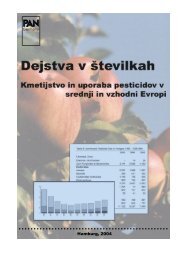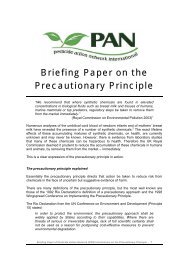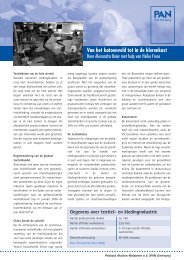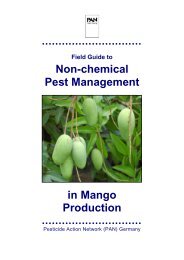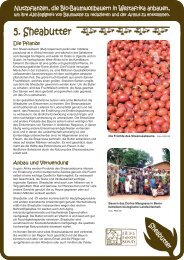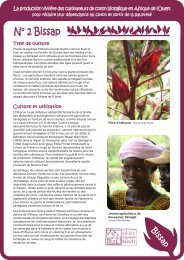Field Guide: How to Grow Crops without Paraquat - Online ...
Field Guide: How to Grow Crops without Paraquat - Online ...
Field Guide: How to Grow Crops without Paraquat - Online ...
You also want an ePaper? Increase the reach of your titles
YUMPU automatically turns print PDFs into web optimized ePapers that Google loves.
<strong>Field</strong> <strong>Guide</strong>: <strong>How</strong> <strong>to</strong> Live and Work Without <strong>Paraquat</strong><br />
B. Category 2: Sedges<br />
Globe fringerush<br />
Scientific name: Fimbristylis miliacea, F. lit<strong>to</strong>ralis<br />
Synonyms: Grasslike fimbry, Grasslike fimbristylis,<br />
Lesser fimbristylis<br />
1. Proper seed selection<br />
2. Deep plowing and proper field level<br />
3. Repeated tillage or soil disturbance<br />
4. Hand weeding<br />
Nutsedge<br />
Scientific name: Cyperus spp.<br />
Synonym: Flatsedge<br />
Habitat<br />
Wet soils<br />
Affected crops<br />
Rice<br />
Distribution<br />
Worldwide<br />
Description<br />
The stem is erect and hairy with two sharp edges. The<br />
leaves are stiff and thread-like and do not have<br />
prominent midribs. They have short blades and the<br />
basal leaves are composed of overlapping leaf<br />
sheaths. The flower head is somewhat rounded<br />
wherein the flower stalks radiate from a common point.<br />
The weed is propagated by seeds. Each plant can<br />
produce up <strong>to</strong> 10,000 seeds that can easily germinate<br />
upon reaching maturity.<br />
Effects and impacts<br />
The root system of Globe fringerush is fibrous,<br />
growing in all directions <strong>to</strong> easily compete with other<br />
plants for moisture and soil nutrients. It is an alternate<br />
host for armyworm, hairy caterpillars, rice bugs,<br />
nema<strong>to</strong>des, and fungal and bacterial diseases.<br />
Studies show that Globe fringerush is found <strong>to</strong> be<br />
resistant <strong>to</strong> 2,4-D on rice fields in Kedah, Malaysia,<br />
and <strong>to</strong> Pyrazosulfuron-ethyl, also on rice fields, in<br />
Santa Catarina, Brazil.<br />
Habitat<br />
Cultivated crops and of gardens<br />
Affected crops<br />
Most agricultural crops<br />
Distribution<br />
Worldwide<br />
Description<br />
Important nutsedge species<br />
Purple nutsedge, Nutgrass (C. rotundus).<br />
The stem is erect, smooth, sharply triangular, slender,<br />
and thickened at the base. The leaves are linear but<br />
shorter than the flowering stem. There are 3 rows of<br />
leaves near the plant base. The leaf-like bracts under<br />
the flower clusters are shorter than the flowers. The<br />
flower is simple and occasionally produces seeds. The<br />
seed head is red or purplish-brown. The plant is<br />
propagated by tubers which are ovate, black, and<br />
have a bitter taste. The rhizome (root-like and<br />
horizontal-growing stem growing just below the<br />
surface of the soil) is wiry and bears connected tubers.<br />
Methods of control<br />
•••••••••••••••••••••••••••••••••••••••••••••••••••<br />
18 Pesticide Action Network (PAN) Germany



